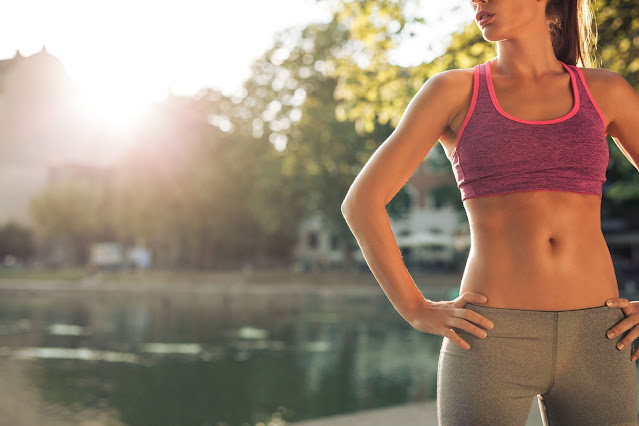When did Your Breasts Start to Sag?
Saggy breasts are part of the changes in the appearance of the breasts that most women experience, as they age. This tends to be a completely natural cosmetic makeover. However, some women may not desire saggy breasts. The treatment term for saggy breasts is ptosis of the breast. There is a wealth of information about what really contributes to saggy breasts. Some are true, others are myths.
Sagging breasts is one of the many natural body changes women go through as they age. Women's breasts are composed of fat and ligaments, but lack muscle tissue, so no amount or type of exercise will strengthen your breasts.
As a woman goes through different phases of life, it's natural for the shape of her breasts to change: They grow larger during pregnancy and breastfeeding, and the skin and surrounding muscles stretch and loosen as body weight fluctuates. And, these breasts constantly defy gravity—and the bigger they get, the bigger they get
they will likely be pulled down over time. They also become softer and less dense after menopause, because the production of estrogen in the ovaries is reduced.
For many women, sagging breasts mean aging. They not only hate this change in breast appearance, because of aesthetic factors, but also hate it, because it shows that they are getting old. Toned and beautiful breasts are something that women can be proud of. But the fact is, the cause of sagging breasts is not only associated with old age. There are other causes.
Breast changes occur naturally as you age. But, many other factors can cause sagging breasts.
Sagging breasts, also known as Fallen breasts, have become a trending topic for many women around the world. While there are many misconceptions about the triggers and treatment of breast ptosis. Every woman has to deal with it in the end. Some are luckier than others because they have firm breasts. And firmer for longer after learning tips to prevent sagging breasts.
Breast Anatomy and Variation
Before going into the causes of saggy breasts, you must first know the anatomy and normal breast conditions. Your breasts are primarily made up of milk-producing glands, milk ducts that carry milk to the nipples, fatty tissue, supporting ligaments and other related tissues and the overlying skin. In young girls, the nipples are usually pointed straight ahead.
The shape and size of your breasts depends on the genes you inherit from your parents, as well as your weight, hormone levels, pregnancy history, age and other factors. Thus, normal breast shape and size is different for every woman.
What is Breast Sagging?
Sagging breasts or ptosis is the removal of the mammary glands, which occurs as a result of stretching of the skin tissue of the breast, along with the ligaments and lack of elasticity of the skin. Ptosis causes disruption of the shape and contour of the beautiful breast.
Age When Your Breasts Begin To Sag
There is no specific age at which you can feel your breasts starting to sag. A woman in her twenties can have sagging breasts, while a woman in her forties can still have tight breasts. Due to the many factors that cause sagging breasts, women experience it at various times.
Of course, age is indeed a factor for all women. If you've managed to avoid a decline in your 30s and 40s, you'll likely start to notice a loss of elasticity and fullness in your breasts as you go through the hormonal changes of menopause.
What Causes Breast Sagging?
You may think that the most common cause of saggy breasts is age. Strangely, this didn't happen. In fact, the elasticity of the skin decreases due to the decreased level of collagen production as women age. This causes your breasts to sag in old age. But, two of the most common causes of sagging breasts are breastfeeding and rapid weight loss. Thus, loss of skin elasticity with age is the most common cause of saggy breasts. Another factor is smoking, which speeds up aging, thereby contributing to sagging breasts, which sometimes occurs earlier in life. (
healthline) Here are some reasons that contribute to changing your breast form and appearance for the worse.
Age:
Age is always chasing every woman. Breast sagging is a normal part of the aging process, especially after menopause, when hormones change and affect the structure and volume of your breast tissue.
Size and Shape of Your Bust
Smaller breasts with a more rounded bottom tend to retain their shape better than larger or narrower breasts. Larger breasts are also more likely to yield to gravity than smaller breasts.
Genetic Factors.
Genetics and sagging boobs. Where is the connection in your opinion? In fact, it's a tie, because your genes not only determine your breast size, they also play an important role in determining the strength of your ligaments, skin elasticity and breast tissue density. While there aren't any muscles to hold your breasts up high and tight, ligaments are something that's left to you.
Exercise Without Support:
Exercises that involve lots of breast movement can put extra stress on the breast ligaments. If your breasts, especially large ones, don't have proper support, this can lead to stretched ligaments and sagging breasts.
Losing or Gaining Weight:
Gaining or losing weight, especially quickly, can change the shape of your breasts, and stretch or shrink the skin around them.
Weight fluctuations are another major cause of breast drooping, as the skin stretches and loses its elasticity, which in turn affects the breasts.
Now that you know some of the main causes of saggy breasts, you will see how you can prevent them from sagging.
Breast Involution and Weaning Fast
It may be that you are not going to sacrifice the appearance of your breasts by breastfeeding. Although, there are risk factors for sagging breasts, if your breasts become two-three times larger, with pregnancy and breastfeeding, which means Cooper's ligaments - the connective tissue in your breasts that help keep their shape - will stretch dramatically. .
It shouldn't be a problem until you start weaning. When you stop breastfeeding, the breast tissue that is responsible for milk production will bounce back, but the skin around the breast may not! While it doesn't happen very often, there's a chance that your breasts will deflate after weaning. It all depends on how choppy your breasts are once weaned.
It's really in your genes! Also, in the case of rapid weaning, stretched ligaments may not shrink to their pre-pregnancy position, making your breasts look flat, saggy, and drooping.
Natural Remedies For Sagging Breasts
What you can do to treat sagging breasts?
Saggy breasts can take a toll on your self-confidence, but you can do certain exercises and use some techniques to increase breast size and make them firmer.
Wear a nice sports bra 24/7
One tip for avoiding stretched ligaments is to wear a supportive bra, preferably cordless, the whole time from the time you find out about your pregnancy. This will give proper relief to your ligaments and breasts, and can help prevent sagging breasts.
Grapeseed oil
Essential oils are one of the best ways to rejuvenate your skin and increase the size of your breasts. Use grapeseed oil regularly to prevent sagging breasts. Massage in grapeseed oil in circular motions for at least 10-15 minutes. Rinse off with cold water.
Attitude
Poor posture, such as a hunched back can cause the breasts to hang down under their own weight, putting more pressure and tension on the breast tissue and making sagging worse.
Keep your back straight and shoulders back. Good posture serves to evenly distribute the load on your body, and helps protect against sagging breasts.
The proper Bra
Perhaps more important than bra style is bra size. The best designed and most supportive bra can make your breasts droop if they are the wrong size.
This bra is responsible for most of the support. So it is very important that the bra is the right size. Your breasts will naturally hang down due to gravity, and the loose band allows them to do just that. Instead, the band should be tight enough to stay in place, and prevent your breasts from being dragged down. You'll know you're using the right band size when the bra is comfortable and lies horizontally around your ribs.
Ice massage
An ice massage is great for treating saggy breasts. It increases blood circulation and also maintains firmness and rejuvenates your skin too. Take a few ice cubes and massage in circular motions for half an hour. This will give you the perfect size you desire.
Your Pre-Pregnancy Breast Size
The bigger your natural breasts were before you got pregnant, the saggy they will be. Here comes the harsh reality of having a beautiful, full, and vibrant C-cup in your early twenties. Breast size before pregnancy is important when it comes to sagging breasts. Although breasts can retain their shape after breastfeeding, they tend to shrink over time and there's not much you can do about it. Because this battle with gravity is a game of desperation.
Eat well
Do healthy eating habits influence sagging breasts? At least there is some evidence that eating lots of antioxidant-rich foods like fruits and vegetables, and staying hydrated will make your breasts and skin plump and elastic. So it may make a difference.
Wean very slowly.
Do the weaning in stages. It will take 2-3 months, not 2-3 days or weeks. Begin by cutting out the day's feedings, one at a time. Give your body (and brain!) time to understand that your baby doesn't need to be fed that much, so your milk supply will be reduced. The last feeding you want to stop is bedtime feeding and morning feeding.
Smoking Causes Sagging Breasts
This bad habit is harmful not only to your lungs but to your skin as well. Smoking breaks down a protein in the skin called elastin, which makes your skin look youthful, elastic and supports breasts.
However, if you are a stubborn smoker, be sure to supplement yourself with plenty of vitamin C, because smoking depletes this vitamin in your body. People who smoke decrease the amount of vitamin C in their bodies.
Vitamin B and C deficiency
This essential vitamin, which is also a strong antioxidant, is needed to make collagen. Human skin fibroblasts are fully dependent on vitamin C for the synthesis of collagen, and for the regulation of the collagen/elastin balance in the dermis.
Collagen is needed for the growth and repair of cells. It produces almost everything in your body from the skin to the ligaments and blood vessels. The less vitamin C you get, the less collagen and elastin that is produced to support the beauty of your skin, the higher the chance of your breasts drooping. But, believe me, sagging breasts are your least of all problems when your body is severely deficient in this essential vitamin.
High levels of homocysteine act as a blocking enzyme that is essential for the normal coordination of collagen and elastin in our body.
Since the B vitamins are easily accessible from different food sources, the best option is to eat a healthy, balanced diet. Consumption of fruits and vegetables is the healthiest and safest way to maintain a balanced diet and make skin look younger.
Does Breastfeeding Cause Breast Sagging?
It was previously thought that breastfeeding can cause your breasts to sag, but research shows that only changes in a woman's breast size during pregnancy cause sagging.. For women who are concerned about these changes, experts advise that they lose the baby's extra weight as soon as possible after delivery, in an attempt to return to a 'normal' weight and size. Women need to be able to look beyond the social pressures of body image and focus more on maintaining an overall healthy body. This will greatly affect the health of your breasts.
Summary
Saggy breasts occur for a variety of reasons. Breastfeeding, wearing a bra, or not wearing a bra are not factors to be concerned about. Aging, pregnancy, smoking, and hormones are the main factors causing sagging breasts. There are many ways to manage this in your own life to increase the firmness of the breasts.










